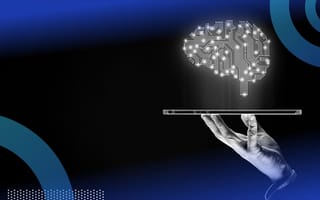Machine Learning Basics: How Machines Learn from Data in 2025
: Machine Learning Basics
Discover the fundamentals of machine learning basics-how machines learn from data, key types of machine learning, and real-world applications for 2025.

Machine Learning Basics are at the heart of today’s artificial intelligence revolution. But what exactly is machine learning, and how does it work? In this post, you’ll learn how machines learn from data, the main types of machine learning, and why it matters for everything from Netflix recommendations to self-driving cars.
What is Machine Learning?
Machine learning is a subset of artificial intelligence that allows computers to learn from data and improve their performance over time-without being explicitly programmed for each task. Instead of following fixed rules, machine learning algorithms find patterns in data and use those patterns to make predictions or decisions.
Learn more at MIT Sloan
How Does Machine Learning Work?
- Data Collection: Gather structured or unstructured data-like spreadsheets, images, or text-from various sources.
DataCamp: What is Machine Learning? - Data Preparation: Clean, organize, and preprocess the data to remove errors and make it suitable for analysis.
- Model Selection: Choose an algorithm (such as linear regression, decision trees, or neural networks) that fits the problem.
- Training: Feed the data into the model so it can learn patterns and relationships.
- Evaluation: Test the model’s accuracy on new data and tune parameters for better results.
- Prediction: Use the trained model to make predictions or automate decisions in real-world applications.

Main Types of Machine Learning
-
Supervised Learning: The model learns from labeled data (where the answer is known). Used for tasks like spam detection, image recognition, and predicting house prices.
Popular algorithms: Linear regression, logistic regression, decision trees, random forests, neural networks.
Google ML Basics -
Unsupervised Learning: The model finds patterns in unlabeled data (where the answer is unknown). Used for clustering customers, anomaly detection, and market segmentation.
Popular algorithms: K-Means clustering, hierarchical clustering, principal component analysis. -
Reinforcement Learning: The model learns by trial and error, receiving rewards or penalties for actions. Used in robotics, game AI, and self-driving cars.
Popular algorithms: Q-learning, deep Q-networks. - Semi-supervised Learning: Combines a small amount of labeled data with a large amount of unlabeled data to improve learning accuracy.
Key Concepts in Machine Learning Basics
- Data: The foundation of machine learning. More and better data usually means better models.
- Features: The variables or attributes used to describe the data. Good feature selection is crucial.
- Model: The mathematical representation that maps inputs (features) to outputs (predictions).
- Training & Testing: Training data teaches the model; testing data checks its accuracy on new, unseen data.
Real-World Examples of Machine Learning
- Netflix and YouTube recommendations
- Spam filters in Gmail
- Face recognition on smartphones
- Self-driving cars
- Fraud detection in banking
Internal Links: Learn More About AI
- AI Tools Hub: Explore Top AI Tools
- AI Learning Hub: Start Your AI Journey
- Reputable AI Sources: Stay Informed
FAQ: Machine Learning Basics
What’s the difference between supervised and unsupervised learning?
Supervised learning uses labeled data to train models, while unsupervised learning finds patterns in unlabeled data.
TutorialsPoint: ML Basics
How much data do I need for machine learning?
It depends on the complexity of the problem, but generally, more data leads to better models.
Can I start learning machine learning without coding experience?
Yes! Many beginner-friendly tools and platforms allow you to experiment with machine learning concepts without deep coding knowledge.
No comments: